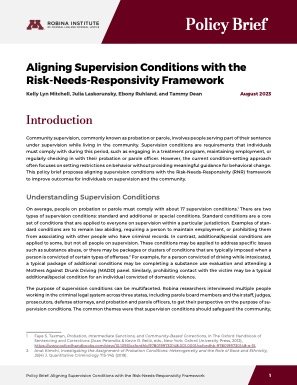By Josephine Wonsun Hahn, Ram Subramanian, and Tiffany Sanabia
Low-level offenses, especially misdemeanors, constitute a majority of the nation’s criminal dockets, including in New York City. A Brennan Center report examining minor offense enforcement trends finds that the city’s minor offense system has shrunk since 2010. But enforcement still falls hardest on communities that have high proportions of people of color and experience elevated levels of poverty. Minor offense criminal justice reform has so far not made a dent in the troubling racial disparities in cases across the city. Brennan Center researchers interviewed police, prosecutors, court officials, city government officials, criminal justice advocacy organizations, community-based service providers, and community leaders — people who contribute to public safety efforts in neighborhoods most impacted by minor offense enforcement — to better understand what may be driving interactions with the city’s minor offense criminal justice system and perpetuating racial disparities. Study participants, as well as previous research, point to particular drivers often referred to as social determinants of justice: social disadvantages such as poverty, housing instability, poor mental health, and substance use; poor conditions and a lack of resources in the most impacted communities; and the criminal justice system’s persistent inability to address social problems and community needs. While recent increases in public disorder in New York City may invite simplified punitive responses that expand enforcement, such responses are unlikely to fundamentally change the conditions under which minor offenses — including those related to nuisance and disorder — grow. No strong empirical evidence exists demonstrating the effectiveness of punitive enforcement in either changing disorderly behavior or reducing crime. In particular, one 2019 meta-analysis contradicts the assumed causal connection between disorder and crime; another finds that aggressive order-maintenance enforcement that targets individual disorderly behaviors does not significantly reduce crime, whereas community and problem-solving approaches do. Such approaches involve people in the community to help identify problems and solutions — and can include non–criminal justice responses, such as referrals to community-based service providers. In any event, a punitive-only approach also comes at too high a financial and human cost. Minor criminal offenses, most of which do not result in a jail sentence, can cause people to lose their jobs and homes, become unemployable, or be burdened with unpayable fines and fees. These compounding burdens make it even harder for people already struggling to exit the revolving door of the criminal justice system.5 Promising strategies already exist in New York City to address root causes of crime and disorder via programs with targeted interventions and resources within communities with high numbers of minor offense cases. These mostly small-scale experiments provide examples of the choices the city can make to help prevent crime while also reducing the cycle of criminal justice system involvement that helps fuel racial disparities. New York City can build on these strategies and programs to both shrink overly punitive responses and address some of the drivers of criminalized behavior in precincts with high caseloads. Although the programs and practices discussed below are based in New York City, many will be relevant to policymakers across the country. Some cities, counties, and states have adopted similar practices that divert people charged with minor offenses — many of whom face substance use, trauma, and mental health problems — from the justice system. Like New York City, other jurisdictions are looking to community-based strategies for solutions outside the criminal justice system. However, these innovations remain limited in scale and scope. Rules governing eligibility shut too many people out, often focusing on only a narrow slice of the population charged with minor offenses — typically a small subset of youth, people with mental illness, people who use drugs, people arrested and charged for the first time, or people arrested and charged with nonviolent offenses.6 There also may be structural limitations based on geography, funding, or capacity. To achieve a smaller, more responsive system that better addresses underlying needs and racial disparities, state and local policymakers, with support from nonprofit organizations and private philanthropy, should consider a range of effective strategies that target communities with elevated minor offense enforcement — neighborhoods in New York City that are home to predominantly Black and Latino populations. These starting steps include: ƒ scaling up successful diversion programs; ƒ building crisis response systems to address mental health and substance use; ƒ expanding supportive housing programs; and ƒ investing in crime-prevention models in which law enforcement, residents, city agencies, and others work together to build public safety and address community needs
New York: Brennan Center for Justice at New York University School of Law, 2024. 17p.










